|
Writing poetry, fiction, or real life is the relfection of ones
own " id ."
Thematics...
Futurisms
The following are examples which are interrelated in both their scope and reasonings.
A note of caution: During the era in which these personalities
came in to being, was a period of great expectations, and the real chance everyone saw for a real change in mankind.
However, economic therory went in the opposite direction as result of trying to make Marxist's philosophies work.
They could not, for the appreciated cost to maintain labor could never balance the ledger books in realtionship to assure
labor a just lifestyle-as labor slumpt into greater poverty as result of Marxist
regimes. Many listed on this page were likewise fooled too!
|
|
| Eile Zola " The Giant of Paris " |
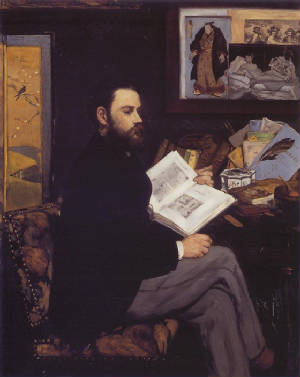
|
| Oil by Monet 1868 |
It was Emile Zola who was outraged over the Alfred Dreyfus de les Affaires , which brought his writing genius
though his historic
" J'Accuse "
and dignified persona to fight for Parisian values of justice-fought in the French courts and the Parisian
public opinion. That day in which he made his decssion to fight for justice was the day in which France stood proud
indeed. Emile Zola - more information goto [ Who 2 - Website ]
Fictional Writers and their influences:
|
 |
Orations - Rethoric
The Life and Death of the Avant Garde on the Battlefield of Rethoric and Beyond
by
Dr. Hubert van den Berg
University Groningen
PDF - file
Ann Lawton's
Futurism in the World
on New Academia dot Com
I am still trying to find a photo of the both of them. If you have one send it " dot
GIF " to danceithaca@aol.com
| Marcus Tullius Cicero |
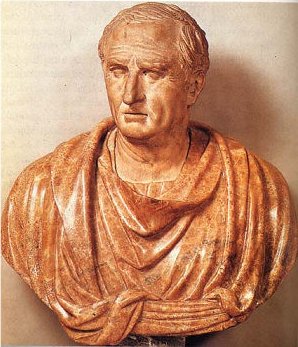
|
| Orator, Philospher, Lawyer. Roman Consul, & Roman Republican 106 - 43 BCE |
Some of the stepping stones of du Avant Garde can
be found here during Cicero's life time. See [ WebSite ] for additional details. Oh yes ! This is one of the most comphrehensive WebSite to date.
|
 |
 |
 |
|
Non - Fictional Writers du Avant Garde who wrote largely
non-fiction, at times, then suddenly found themselves creating history too ! This was most apparent during the
Spanish Civil War during the 1930s.
The Avant - Garde in Spain and Spanish America
Dr. Stephen M. Hart
University of Kentucky
| Cataline ( Espain ) - Avant Garde |
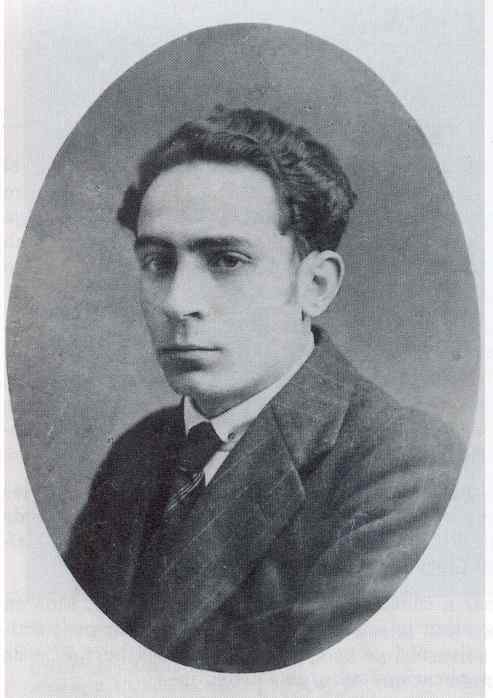
|
| Joan Salvat - Papasseit |
| Click on " logo here " for details |

|
| A real les avant garde online E-Zine. |
| The Algonquin Hotel |
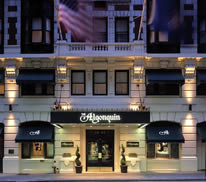
|
| Home of the Historic Round Tablers ( History ~ click on here ! ) |
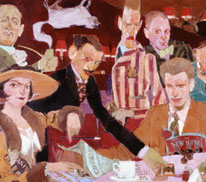
Some of the Membership:
Dorthy Parker Robert Benchley Robert Sherwood George S Kaufman
Heywood Brown Edna Ferber F. Scott Fitzgerald and Ernest Hemingway.
| Here sat the future great writers of America |
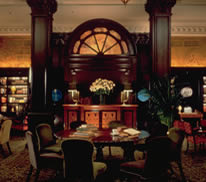
|
| The Actual Table itself! |
| Andy Warhols Favorite Model |
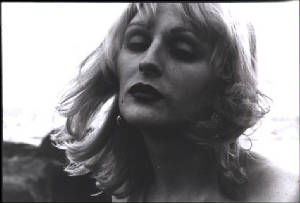
|
| Lura Rubin " click on for details " |

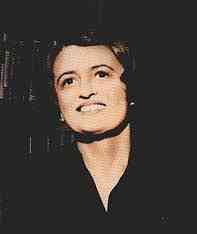
|
| Ayn Rand |
" B.H."
" Pax Fidelis
"
Reason - Stereo - Scopic:
What the various authors, artists, activists, and innovators did during the 20th Century was to foucs on different side
of the positive human condition. What they had in common, though at times they were fervert adversaries, not counting
the intellectual near cat - like public forum fights for public apporval of their ideas, the celebration of freedom. Though
some of them went hungry, and lived with rags on their backs, lonely, and cold, nonetheless. This is their " Pax Fidelis "
and they essentailly, as most Americans still do not know, developed in their free and open expressionalisms, the formal basis
of the American Nationalism.
You have to stand back and ask yourself what had impel them to do so. Then, and if you can, abandon your own bias,
and egocentricitiy, and take a closer look at their qualities of thinking, and how they approached both the subject of G-
D and nature, freedom, love, their visions of the future, and beauty, and then you will see it. Their courage to confront
publically the major anxieties of their own times and era forced, self-impelled, upon them by their own
individual character of " Love " for human kind. Though personalities like Ayn Randand her opposits, would be
trip up on the word love, in her since her own humility, but gave most brillantly nevertheless.
Roger M. Christian. December 17, 2005.
P.S. As for me - my defining moment came when I read Goodbye Mr. Chips, by James Hilton; that was me to
the hilt, James, really peg'ed me good, and now you can start to understand the why of this now " teaching "WebSite.
The Heroic Generation 1988.
The approximate year when a new Heroic Generation appeared, The last appeared 1895
The Heroic Generation:
At the cutting edge of du Avant Garde, is that a civilization's development rest solely on the socio
- cultural processes of how it nurtures it's youth. Thus is should be to everyone surprise that something
happened previous to the year of 2000. What has happen, is the development of The Heroic
Generation of American youth who are now entering the 16 to 18 years of age and younger to about 11.
Why?
The Critical aspect of this is based on the clear observation that as the American civilization became
more complex, there has been increasing burdens of sociocultrual and sociopolitical complex adaptions by both the parents
and children of each family from 1982 till present. The forms of these adaptation has magnified the perceptions of diversity
of the emerging core of youth even more. Their visual range of what is still not yet been measure, and maybe by present
skill research levels unmeasureable, as well as the newer impact upon their own innate drives facilitated by a resultant
unique struggle for this generation to find idenity. Most amazing is the interdiction of the internet experiences into
the intellegence and visual sensory and their developmental stages 8 to 14 years old, of new emotional structures from
various natural innate drives ( here before never used by previous generations ) which are now, historically, separating
forming new resultant and yet unkown " impacted innate drives "-the new corridor. Simply
what is the resultant of increased usage of their nervous systems.
It is what is contained within in this new corridor which should be their main
future focus of unity. How internet experiences impacted their own personal, and individual bio - spheres, and the resultant
increased locations and more diverse usage of their brain stimulus is the greater unknown-even to them.
Thus and unlike Gertude Stein quote about the " Lost Generation " We now have the " Heroic Generation.
" In a histotic review we had an Heroic Generation born in 1745, 1832, 1876, 1917, then 1989.
What is even more surprising is that they have caught upon certain indenity ethos which is in its initial
stages of social and cultural evolution - development are just now being defined by themselves, while others outsiders are
in the dark. Moreover, the socio-spirituality of this genertion is their special
gifts.
The result in art, music, and others is just now appearing at their other edges....
This is leading us to the....
The impact of which will be felt culturally around the year 2016. Politically is the greater unknown.
Pax Fidelis! .
The JSTOR online archive of cirtical contemporary and historic works .
|
|
 |
 |
 |
 |
|
The New York School of Poets:
David Lehman writer.
| the New York School of Poets. |
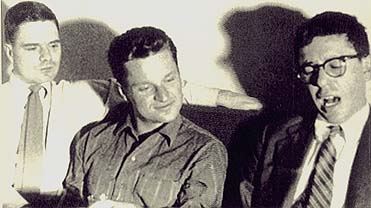
|
| Left to Right ~ James Schuyler, John Ashbery, Kenneth Koch - August 1956 |
See details, and how to purchase David Lehman's account of the other people involved in this significant
writers movement goto [ WebSite ].
Moreover, jacket magazine - which has WebSites of other publications should be also examined at your leisure.
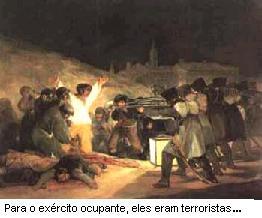
The artistic and historic loop in which all artistic expresions converges. A stand against tyrany
!
| Andy Wharhol ~ Jack Smith |

|
| Website - Avant Garde Factory Made |
Factory Made
This is where art, discovery, writing, and film making were all experimented with, and gave
birth to the Avant Garde of the Mid 1960s. In the very air, the scent of destiny was everywhere, and here too was the
captivating exposure of those who pioneered to discover. Any Warhol emerge from here as the leader in art history as
a result.
Jack Smith's sensation " Flaming Creatures 1963 "
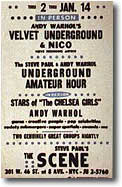
"The Velvet Underground."
Then during the 1970s Andy Warhols Factory:
| The Factory |
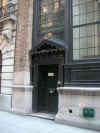
|
| For details click on! |
The Life of Andy Warhol
APA Citation
The Life of Andy Warhol. Anti Essays. Retrieved June 4, 2007,
from the World Wide Web: http://www.antiessays.com/free-essays/94.html
Never before have I encountered more intriguing works of art than those
done by Andy Warhol. I have been curious
about his life ever since I saw
his work in Milwaukee. I saw his famous work of the Campbell's Soup Can.
By viewing
this, one can tell he is not your average artist. I'm sure his
life is full of interesting events that shaped him into
who he was. As an
artist myself, I would like to get to know the background of his life. I
may then be able to appreciate
his styles and understand why and how his
works were created. His life is as interesting as his artistic
masterpieces.
Andrew Warhola (his original name) was born one of three sons of Czech
immigrants, somewhere in Pennsylvania on either
August 6, 1928 or on
September 28, 1930 (the date on his birth certificate). His father died
when Andy was at a very
young age. Thus, it forced Andy into a deep
depression containing lack of self confidence. Much of his young life has
been kept secret. However, he did report being very shy and depressed
because he never felt comfortable with his homosexuality.
His childhood
life may have been full of the torture that children threw at him for
being the different person he
was. He was able to attend college. After
graduating with a Bachelor of Arts degree in pictorial design from
Carnegie
Institute of Technology in 1949, he went to New York City with
Philip Pearlstein, who was a fellow student that later
became a well-known
realist painter. In 1960, Warhol finally began to paint in earnest and to
view art seriously as
a career. He began his career with commercial
drawings of women's shoes. In 1961, an early manifestation was his Dick
Tracy, an enlarged version of the comic strip that was placed in the
window of Lord & Taylor's department store.
He followed in his own
footsteps to keep going in the ever-so-famous "pop art" track. Warhol's
use of images are so
close to the images themselves, thanks to the
photographic silkscreen technique, which is a process of applying the same
image over and over again without changing the original. In 1963, he began
turning film into his next aesthetic. He
was the recorder of the world
around him. Warhol saw this world as populated by hustlers of various
sorts, motivated
largely by money and the goods it would buy. Later that
next year, he started to experiment in underground film. In the
late 70's
he began to use sex and nudity to gain attention in his films. Whether
this was moral or not; it did, however,
work. The rest of his short life
was spent visiting with celebrities and keeping up with the world's times.
He tried
to understand how the rest of the world saw things, but just
never got there. Sadly, Warhol died of a heart failure on
March 9, 1987,
still wearing his famous blond hair wig.
Andy's diaries are not actual written records of his day to
day accounts,
but they are audio recordings of his phone conversations to Pat Hackett
every Monday through Friday
(from Wednesday, November 24, 1976 to Tuesday,
February 17, 1987, just weeks before his death). Warhol originally
intended
these daily records to be documentation of his minor "business"
expenses. He was just audited and felt the need to be
extra careful. "In a
word it was a diary. But whatever its broader objective, its narrow one,
to satisfy tax auditors,
was always on my mind" (Warhol xvi). Later on, he
felt the diaries were a great way to explain his everyday occurrences
for
more than a decade of his life. This view of his life from his eyes is
probably the most balanced view ever given.
He may have changed since the
60's, but it is still the truest representation of Andy, himself. He never
expressed
the key happenings of his life; it's as if we, the readers,
already knew them. He just usually mentions the quick everyday
type things
such as a cab ride to uptown New York.
The first major influence on Andy Warhol's life was the stepping
stone of
his artistic career, his enrollment in and completion of Carnegie
Institute of Technology with a bachelor
degree in pictorial design. After
graduating he moved out to New York City, where his life blossomed. He
lived for
a couple of years with Philip Pearlstein, who he had met at
school. Warhol, with his education centered around design,
set out to
begin his career on the right foot. He started doing drawings for
advertisements in a women's shoe catalog.
It may not have been much to
brag about, but it was at least something he could learn and gain from the
experience
given to him. Andy may have acquired his use of media exploited
images through his beginning attempts at commercialism.
He knew what sold
to society, whether he agreed with it or not. He continued on with
simplified pop art and he made
it famous. He is the person most people
think about when pop art is mentioned. Through his advertising projects,
he
was conditioned to think only in glorification of people, products, and
style. One of his popular works, the silkscreen
of the Campbell's Soup
Can, is an example of this. It is an image that everyone is familiar with,
and it is so common
that sometimes it is overlooked. Many times, Andy took
something simple and glorified it. This is how he made his designing
skills useful in promotion. "One would compare Warhol to the pictorial
hyper-realism of Norman Rockwell, and to the
surrealism of Marcel Duchamp,
and the radicalism of Jasper Johns" (Sagan 1).
A second major influence in Andy Warhol's
life is his participation in the
underground film scene. It started in 1963, when he called himself "the
recorder
of society around him" (Moritz 590). He would find people for his
movies in a club-type warehouse called Max's Kansas
City. Every night,
celebrities of art, fashion, music, and underground film-making crowds
gathered in the back corners
of Max's to try their chance at working with
Warhol. In 1968, he was nearly killed by a woman who was in one of his
short
films. She shot him on the side of his chest, but fortunately he was
not killed. He still continued to make films; such
famous ones are "Eat,"
"Haircut," "Sleep," "Kiss," and "Empire." He would make them boring on
purpose to possibly
prove a point. Again it was glorifying something
thought of as being extremely pointless. In the late 70's he began to
use
sex and nudity, featuring films concerning sexual bondage. He may have
been simply looking for a shock value content.
Many artists work off shock
value, it takes only the true to admit it and still continue with it.
The last and most
important influence on Warhol was his mother, Julia
Warhola. When Andy first arrived in New York, he would share apartments
with friends and acquaintances. Eventually he could afford a place of his
own. Then his mother suddenly arrived in
town and moved in with him. Her
reason was to look after him. She would constantly keep an eye out for a
wife for
Andy. Little did she know he was interested in the opposite sex
for marriage. Andy appreciated his mother, and never wanted
to explain how
she had an impact on him. Maybe it was the fact that she meant well, and
tried her hardest to take
care of him. She lived with him on 89th Street
and Lexington Avenue until 1971. By then, suffering from senility, she
required constant care and Andy sent her back to Pittsburgh to be cared
for by his two brothers, John and Paul. After
suffering a stroke, she died
in her nursing home in 1972. Andy did not except the fact too kindly. He
would even go
as far to say his mother was doing fine, when people would
ask about her, even though she had already passed away. Andy
stayed quiet
and tried to hide himself from the rest of society. He would avoid
emotional interaction as much as he
could. He did this so he could "shrink
away from human touch" (Moritz 591). A man who started his life shy and
uncomfortable,
blossomed into an outspoken artist, now finished his life
with feelings even worse than the beginning of his life.
After
extensive research I found that Andy had much more to his life than
I had originally expected. He was involved in the
classic rock band The
Velvet Underground, with famous singer Lou Reed. He actually even designed
a few of the album
covers. Most people remember the self-entitled album
with the picture of a banana on it. Directly to the left of the banana
read the words "peel me." If one would peel it, it would reveal the pink
insides of a banana. Truly a work of Andy,
I must say. Another thing I
found was that Andy was not only homosexual, but he was "omnisexual." It
was rumored he
had no problem with sex with anyone or anything. Men,
women, animals, you name it, it was probably thought of. And last
of all I
found he was unusually kind and appreciative to others, especially the
ones who worked for him. Pat Hackett,
his editor, once said that she has
never met a person who says "thank you" as much as Andy does.
Not once have I been
more informed on a person's life. In the beginning I
thought I knew a lot about. This research on Andy Warhol definitely
reinforced my positive view of him. It may have possibly enhanced my
appreciation for him as well. I enjoyed the honesty
of the entire diary.
Nothing was hidden from the reader and I felt as informed as a good friend
of his would feel.
His life is an interesting one and I believe more
people should try to investigate other lives of the unusual. It expands
your own viewpoints to accept those of others.
Many critics have different viewpoints on Warhol's autobiography. He
was
still appreciated by those who understood his ideas. "But he had to have
had some sense of history, or he wouldn't
have left the diaries behind to
try to explain everything to future generations" (Plagens 1732). Some
realize that
the diaries are rather boring, but seem to see the true Andy
come through in the entries. "Despite their virtuoso triviality,
their
naive snobbery and their incredible length, the diaries are not without a
certain charm" (Amis 1732). Others
saw the diaries as a simplistic record
of events. "His diaries are more or less just records of who went where
and
did what with whom, that anybody else who'd been along could have
kept" (Plagens 1732). It's too bad he didn't start the
diaries earlier in
his life, such as the 60's, "when it would have been more interesting to
know what he did and whom
he was with, instead of waiting until 1976 to
begin" (Plagens 1732). Some even complained of the editing job done by Pat
Hackett. "One problem with the diaries is their postmodern polish, such as
the casual proofreading and editing" (Trebay
1732). The reason the editor
didn't fit up to par was the mere fact she wanted it to sound how Andy
explained the
day. "...still the book is great social history with its
lip-smacking tales of loveless, sexless marriages, its gimlet-eyed
view of
other people's success, and its rampant unclosetings" (Trebay 1732). I,
myself, found the book very entertaining
and a great nonchalant look at
the famous and their everyday lives. It may have been organized better and
condensed
a bit, but none-the-less it was still interesting and kept me
reading.
--------------------------------------------------------------
|
|
|
|
|
|
The Essay.
See Cultural Democracy, An Evolving Essay by Roger Meredith Christian, Ithaca, New York.
Story - Essay Links:
SULLIVAN'S SHORT STORIES
The site contains short fiction in the genres of science fiction, fantasy, horror, thriller, humor, and mainstream.
|
|
|

